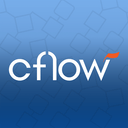Cflow is a cloud-based workflow automation platform that streamlines business processes and enhances operational efficiency.
Supercharge your workflows with AI agents that can intelligently automate decisions and actions across your organization.


Cflow brings powerful workflow automation to business processes. Relevance AI enhances this with intelligent AI agents that can analyze, decide, and trigger actions across your workflows.
Intelligent Workflow Orchestration
The agent automates complex workflows, ensuring seamless process execution.
Data-Driven Decision Making
The agent analyzes real-time data to provide actionable insights for informed choices.
Automated Compliance Checks
The agent ensures adherence to policies by validating data against predefined rules.
Relevance AI gives you access to a wide variety of Cflow tools within your automated workflows and AI agent pipelines.
What you’ll need
You don't need to be a developer to set up this integration. Follow this simple guide to get started:
- A Cflow account
- A Relevance AI account with access to your workspace
- Authorization (you'll connect securely using OAuth—no sensitive info stored manually)
Security & Reliability
The integration uses secure OAuth authentication, ensuring only authorized workflows access your Cflow data. Relevance AI handles API operations (like GET, POST, PUT, DELETE, PATCH) in the background—so you don't have to worry about authentication tokens, request formatting, or rate limits.
Built-in validation and error handling ensure your workflows run smoothly across the Cflow platform.
No training on your data
Your data remains private and is never utilized for model training purposes.
Security first
We never store anything we don’t need to. The inputs or outputs of your tools are never stored.

Best Practices for Non-Technical Users
To get the most out of the Cflow + Relevance AI integration without writing code:
- Configure API permissions: Ensure proper OAuth authentication and read-write access are enabled.
- Use correct endpoints: Double-check your relative paths when making API calls to Cflow.
- Validate request methods: Choose appropriate HTTP methods (GET, POST, PUT, etc.) for your specific needs.
- Monitor responses: Check status codes and response bodies to ensure successful API operations.
- Handle headers properly: Add custom headers when needed, but remember Authorization headers are automatic.








